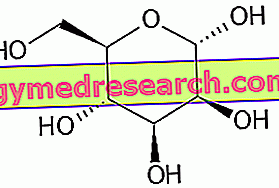Definition
Primary biliary cirrhosis is a chronic autoimmune liver disease characterized by the progressive destruction of the bile ducts that run inside the liver.
Damage to the intrahepatic bile ducts leads to reduced formation and secretion of bile (cholestasis). Over time, as the inflammation of the ducts extends to the liver causing it to heal (fibrosis) and permanent damage, cirrhosis and liver failure take over.
The triggering event that induces the immunological attack of T lymphocytes on the biliary tract is unknown, although it is probably triggered by an infectious or toxic agent and is supported by genetic factors. Primary biliary cirrhosis, in general, is associated with other autoimmune diseases, such as rheumatoid arthritis, Sjögren's syndrome and autoimmune thyroiditis.
Most common symptoms and signs *
- Ascites
- Asthenia
- Increased transaminases
- Dry mouth
- Kidney stones
- Swollen ankles
- Colaluria
- Diarrhea
- Yellow Diarrhea
- Drumstick fingers
- Pain in the upper part of the abdomen
- I made clear
- Hypercholesterolemia
- Portal hypertension
- Jaundice
- Yellow tongue
- Osteoporosis
- itch
- Eye dryness
- splenomegaly
- steatorrhea
- xANTHELASMA
- xanthomas
Further indications
In the early stages of the disease, about half of the patients have no symptoms; the remaining part complains instead of itching, fatigue, dry mouth and conjunctiva. Other initial manifestations include pain in the upper right abdominal quadrant, increased liver volume, splenomegaly and jaundice (with yellowing of the skin and sclera, the white part of the eye).
As the disease progresses, diarrhea and oily stools appear, due to the reduced production of bile that compromises fat absorption. Also the biliary elimination of cholesterol undergoes an alteration, therefore it follows an increase of the levels in circulation. For this reason, there is a deposition of lipids in the skin, especially around the eyelids (xantelasmas).
Finally, in the most advanced phase of primary biliary cirrhosis, complications of bile stagnation (including lipid malabsorption, malnutrition and osteoporosis) and liver cirrhosis (portal hypertension, ascites, esophageal varices, etc.) appear.
In the presence of primary biliary cirrhosis, laboratory tests reveal abnormalities of the hepatic biochemical profile and, characteristically, the presence of anti-mitochondrial antibodies in serum. Cholangiography and liver biopsy are required for diagnostic confirmation and staging.
The treatment aims to slow down the evolution of the disease and involves the use of ursodeoxycholic acid. For patients with liver failure, liver transplantation can be considered.



